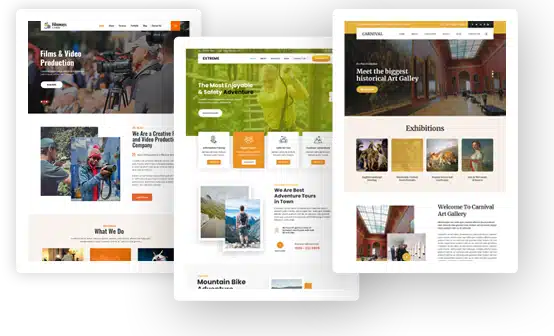English for Developers: Improve Your WordPress Web Development Skills and Client Communication

A lot of developers hear “improve your English” and immediately picture grammar drills, awkward role-play, and vocabulary lists that feel like they were written for tourists at an airport. But in WordPress web development, English isn’t just a nice extra – it’s part of the toolkit. It’s the hidden layer that sits between your technical decisions and the client’s expectations.
Think about your typical project flow. You gather requirements, estimate scope, explain trade-offs, document changes, defend deadlines, and translate technical constraints into business language. Every one of those moments can either build trust or create friction. And yes – your code can be flawless while your communication quietly breaks the project.
Better English doesn’t mean sounding fancy. It means being precise. It means writing messages that reduce confusion, prevent scope creep, and speed up approvals. Ultimately, it means fewer misunderstandings – and fewer “urgent” calls at 11 PM.
WordPress Development Lives in an English-First Ecosystem
Even if you work with local clients, WordPress itself speaks English. Core documentation, GitHub issues, plugin readme files, PHP error messages, REST API references, WP-CLI commands, and most dev discussions are primarily written in English. That’s not cultural – it’s practical. When the most powerful resources are English-first, improving your professional English becomes a direct upgrade to your development speed.
It also changes how you learn. When you can comfortably read changelogs and RFC discussions, you stop relying on simplified summaries or secondhand tutorials. You become the kind of developer who can evaluate breaking changes, interpret security notes, and understand performance guidance at the source.
And here’s the key: WordPress is no longer “just a blogging platform.” Modern WordPress projects involve headless architecture, block-based UIs, custom post types, dynamic rendering, caching strategy, CI/CD, security hardening, and integrations with third-party services. The deeper you go, the more English becomes the language of clarity.
The Developer English That Actually Matters (Not the School Stuff)
Let’s make this real: developer English isn’t about poetry. It’s about accuracy under pressure. And in WordPress web development, there are a few “English zones” where strong communication gives you immediate return.
First, requirements. You need to confirm what the client means by “simple.” Is “simple” a one-page landing page, or a full site with a page builder, animations, and multi-language support? Second, technical explanations. When you say “it’s not possible,” clients hear “I don’t want to.” When you say “it’s possible, but it increases complexity and cost because X,” they hear professionalism.
Third, documentation. Your future self (and other developers) depend on your notes. English that is structured and clear – short sentences, predictable headings, consistent terms – turns documentation into a tool rather than a guilt trip.
Finally, feedback and support. The most frustrating messages are vague ones: “it doesn’t work,” “bug on the site,” “maybe slow.” Strong developer English teaches you to ask for the right data: browser, device, URL, steps, expected result, actual result, screenshots, console errors. That’s not just English – it’s debugging discipline.
Client Communication: Turning Technical Reality Into Business Confidence
Clients don’t hire you for code alone. They hire you for outcomes: leads, sales, speed, stability, reliability, and less stress. Your job is to connect technical choices to those outcomes in language that makes sense to them.
Here’s a powerful analogy: your code is the engine, but your English is the dashboard. The client won’t open the hood. They want clean indicators: progress, risk, and next steps. When you communicate like a dashboard – clear, short, measurable – you reduce fear and increase trust.
A practical pattern that works extremely well is this three-part structure in client messages:
- What’s happening (status)
- Why it matters (impact)
- What I need from you (action)
This approach doesn’t just sound professional – it prevents endless back-and-forth. Clients like it because it feels organized. Developers like it because it reduces confusion. Everyone wins.
And in WordPress projects, where non-technical stakeholders often approve design, content, and plugin decisions, clarity becomes the difference between smooth delivery and endless revision cycles.
English That Helps You Build Better WordPress Solutions
Improving English can also make you a stronger architect. That might sound strange – until you notice how much architecture depends on naming and structure.
WordPress is full of concepts that require careful wording: templates, hooks, filters, actions, capabilities, user roles, nonces, caching layers, cron jobs, custom endpoints, rewrite rules. If you can describe these accurately, you can design them more accurately. Language shapes thinking.
When you can clearly explain “why we shouldn’t install 25 plugins for one feature,” you’re more likely to build the feature properly – perhaps as a small custom plugin, a mu-plugin, or a theme-specific module. When you can express the performance cost of heavy page builders, you can guide the client toward a better stack: lightweight theme, optimized block patterns, proper caching, compressed images, and minimized scripts.
This is also where your English improves your collaboration with other developers. Good pull request descriptions, clear commit messages, and readable tickets don’t just help the team – they reduce bugs. Miscommunication is a common source of technical debt.
Vocabulary for Web Development Technologies (The Words You’ll Actually Use)
Being “good at English” as a developer often means being fluent in technology language – words that appear constantly in documentation, proposals, and technical discussions. Below is a focused list of terms that actually show up in WordPress-related web development work:
- Build pipeline, bundler, minification, tree-shaking
- Core Web Vitals, LCP, CLS, INP, render-blocking resources
- Caching layers (browser, page, object), CDN, cache invalidation
- REST API endpoints, authentication, rate limiting
- Database indexing, query optimization, N+1 queries
- Security hardening, attack surface, sanitization, escaping, nonce validation
- Accessibility (a11y), semantic HTML, keyboard navigation
- Staging environment, deployment, rollback, regression testing
- Dependency management, Composer, npm packages
- Logging, monitoring, error reporting, incident response
You don’t need to memorize giant dictionaries. Instead, aim for “working fluency” in the vocabulary that supports your daily tasks. The benefit is immediate: proposals become clearer, tickets become faster to process, and client calls become less exhausting.
If you want a helpful place to practice reading and writing in a web-development context, you can explore resources on the official website.
A Simple Communication Framework You Can Reuse (One List Only)
When you’re writing to clients or teammates, you don’t need to invent a new style every time. Use repeatable templates. Here’s a lightweight framework you can copy into emails, Slack messages, or project updates:
- Summary: One sentence describing what changed or what you’re doing.
- Details: Two to five lines explaining key points without deep jargon.
- Impact: What the change improves (speed, stability, UX, security).
- Risk/Trade-off: Any downside, limitation, or required compromise.
- Next Steps: What happens next and what you need from the client.
- Deadline: A clear date and time for approvals or content delivery.
This framework is powerful because it scales. It works for a one-hour fix and for a three-month rebuild. It also creates a professional rhythm: clients start responding in the same structure, and suddenly everything becomes easier.
Common WordPress Scenarios – and the English You Need for Each One
WordPress development has recurring “communication moments.” If you master English for these moments, your projects become calmer and more predictable.
Scope and estimation: Clients often ask for “one more small change.” Your English must politely protect the project. You can do this without sounding defensive by using language like: “That’s possible. To keep the timeline accurate, I’ll add it as a separate item with its own estimate.”
Performance work: Performance is invisible until it’s slow. You need English that explains trade-offs: “We can achieve faster load times by reducing third-party scripts and optimizing images, but it may require changing the current slider plugin.”
Security: Security language must be confident but not scary. You’re not selling panic – you’re selling stability: “We’ll implement updates, least-privilege access, and stronger validation to reduce risk and prevent common attacks.”
Plugin decisions: Clients assume plugins are free magic. You need neutral, factual explanation: “This plugin adds features quickly, but it also adds maintenance overhead and potential conflicts. A custom implementation is cleaner and easier to control long-term.”
Content and SEO: WordPress projects often stall because content is late. English helps you set expectations early: “Design approval is fastest when the final content is provided. Placeholder text may change spacing and affect responsive layout.”
Table: Developer Messages – Before vs After (Clearer, Faster, More Professional)
Below is a practical table showing how small English upgrades change the entire tone and outcome of real project communication.
| Situation | Weak Message | Strong Message | Why It Works |
| Bug report | “It’s broken.” | “I can reproduce it on mobile Safari. Steps: open /pricing → tap ‘Buy’ → blank screen. Console shows a JS error. I’ll patch it and deploy to staging today.” | Adds context, steps, and plan. |
| Timeline push | “Need more time.” | “To keep quality stable, I need one extra day to test the checkout flow across devices and payment states. New delivery: Thursday 5 PM.” | Explains reason + concrete new deadline. |
| Plugin request | “No, bad plugin.” | “This plugin conflicts with the current caching setup and increases page weight. I recommend a lighter alternative or a small custom module.” | Gives technical reason + options. |
| Content delay | “Send content.” | “To finalize the homepage layout and avoid redesign later, I need the final headline + CTA text by Tuesday. Otherwise we’ll ship with placeholders and adjust in phase two.” | Sets urgency without stress. |
| Performance | “Site is slow.” | “Largest load cost is third-party scripts and uncompressed hero images. Next steps: compress images, defer non-critical scripts, and enable object caching.” | Converts “slow” into actions. |
If you learn to write like the “Strong Message” column consistently, clients start trusting your process more – and they approve things faster because they understand what’s happening.
How to Practice English While Building Real WordPress Projects
The easiest way to improve is not “studying English,” but practicing English inside your real workflow. Your everyday tasks can become your training system.
Write clearer commit messages. Describe what changed and why. Write pull request descriptions that explain risk and testing. Improve your README files so a new developer can set up the project without asking you questions. The goal is not to sound perfect – the goal is to be understood instantly.
Also, read more technical English in the places WordPress developers live: documentation, changelogs, GitHub issues, performance audits, security advisories, and plugin/theme code comments. It’s like training your ear for a new accent – your brain starts noticing patterns, phrases, and structure. Soon, you’ll write the same way naturally.
And don’t ignore speaking skills. If you do client calls, practice short explanations of common concepts: “staging vs production,” “caching,” “responsive breakpoints,” “plugin conflicts,” “database optimization.” Repeat them until they sound smooth. When you can explain them without stress, you’ll sound confident – and confidence sells.
The Payoff: More Trust, Better Projects, Higher Rates
Here’s the honest truth: clients don’t pay premium rates just for technical skill. They pay for reduced risk. They pay for a developer who communicates clearly, plans realistically, and keeps the project stable.
English is one of the fastest ways to reduce perceived risk. When your updates are precise, your estimates are structured, and your explanations are calm and logical, clients feel safe. And when clients feel safe, they commit to bigger scopes, approve budgets quicker, and recommend you more often.
So if you’re a WordPress developer looking to level up, don’t treat English as a side quest. Treat it like performance optimization: small changes, repeated consistently, that compound into real results. Your code will still matter – but your communication will decide how far your code can take you.

